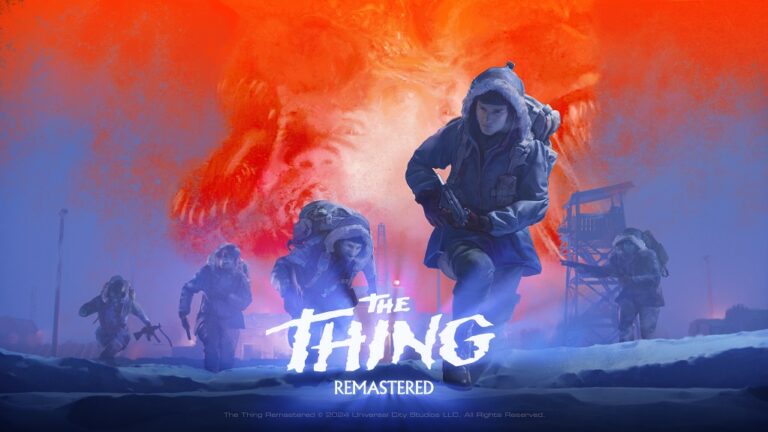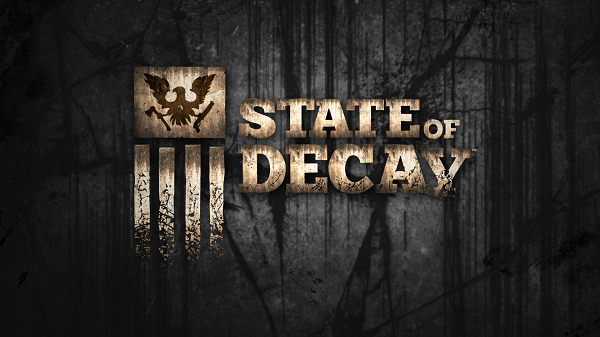
State of Decay, originally conceived as “Class 3”, a single-player precursor to “Class 4”, a zombie survival MMO, is quite the ambitious Xbox Live Arcade release. State of Decay surprises with how much it has to offer to those looking for a survival oriented zombie game. Despite an over-saturation of the zombie genre, it’s not often that we see a zombie video game that puts a real emphasis on resource collecting and management, where player action is driven by basic human needs. Day Z accomplishes this quite well, but it’s still currently a mod of another game and not a standalone release. State of Decay is by no means a clone of Day Z’; it is its own game with a focus on gameplay features that zombie fans would appreciate. It would be unfair to criticize it so unjustly when it’s bringing some much desired gameplay features to the genre.
State of Decay takes place in an open world “state” that’s approximately 16 square kilometers. The world of State of Decay includes farmland, some forest, and three major towns. Hundreds of fully furnished homes and buildings can be explored without any loading screens. To navigate the environment, abandoned cars can be used. There doesn’t seem to be a large variety of vehicles, but you can’t be too picky when it’s either a slow station wagon or getting chased by an angry zombie horde.
At the very start of the game, players are immediately tasked with planning long-term survival tactics. Weapons break, health and ammo are scarce, and zombies are relentless. Once the player sets up his or her first home base, the game’s RTS-like elements begin to show. Base management comes in the form of finding resources such as health items, construction material, food, and ammunition. These resources both contribute to a cache that players can borrow from to fill their personal inventory and the base itself. Infirmaries, gardens, sleeping quarters, guard posts, kitchens, workshops, and storerooms can be crafted onto one’s base to improve its living conditions and safety. In turn, this keeps morale up and survivor’s happy and healthy.
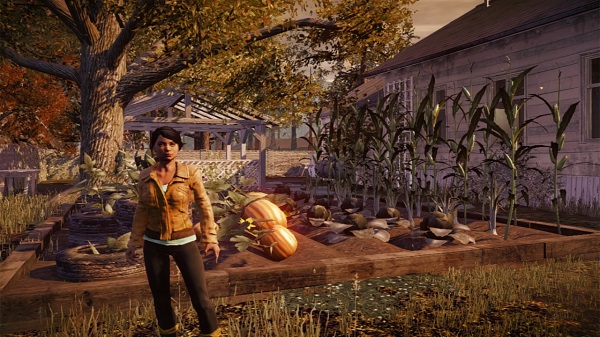
Outposts can be set up in fully searched homes or buildings. Outposts allow for players to set up small safe zones equipped with access to their home inventory. Oddly though, upgrading or removing an outpost is a guessing game due to the menu not indicating where the selected outpost is located on the map–this seems like an odd oversight that hurts relocation of the limited amount of outposts that the player can set up. Many structures that can be built within your fortress, are upgradable. Upgrades either increase performance, add more defense, increase the circumference of safe zones, boost morale, or decrease resources expenditure.
Occasionally missions will pop up that task the player with resolving a fellow survivor’s dilemma, whether that be a problem with their attitude, helping them kill a special zombie type, or finding them after they’ve gone missing. At one point during my playthrough I became annoyed by the constant missing survivor missions that kept popping up. This gave me a tough time, because it forced me to play as my low level survivors in order to save my high level survivors. This handicap was very frustrating as I could not pinpoint the exact reason why people kept running away after I had followed all suggestions to improve my base. It’s easy to feel overwhelmed in a game like this, especially if you’re adamant on making sure everyone survives. That’s not an easy task based on my experience.
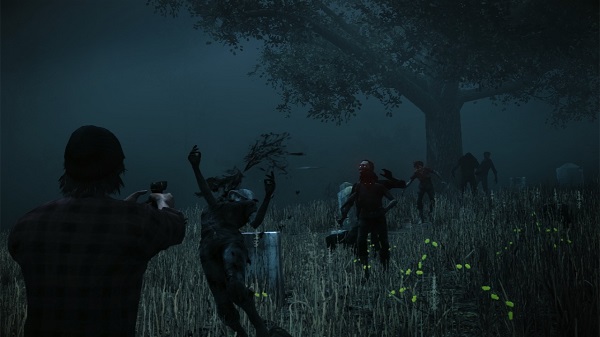
Survivors that are added to your group each carry their own personality and skills. I found myself impressed by the traits attached to my survivors. For example, my group contains a natural born leader, an alcoholic, a problem solver, a coward, and some douche bag womanizer. Some survivors have one particular unique skill that acts as their profession within your little community. A survivor that can cook will operate the kitchen, while a survivor that used to box will occupy the training room, etc. While these attributes don’t extend into the character’s personality while you play as them, it’s a neat inclusion that gives your group a little bit more character.
Survivor’s individual skills are naturally upgraded over time as an action gets repeated: the more a character uses a melee weapon, fighting skill increases. While melee weapons will be the best course of action to employ when trying to keep noise to a minimum and conserve ammo, each melee weapon will break over time. Guns are the best weapons to deal with zombies (aside from running into them with a car), but ammo conservation forces players to choose their fights wisely. Stamina is also a concern in State of Decay, as players cannot run or do special attacks for extended periods of time without becoming fatigued. When fatigued, food is needed to quickly recover some stamina. After long sessions of play as one character, he or she will eventually become tired and will see a negative impact on his or her stamina bar—where the maximum amount of stamina that can be recovered decreases.
Stealth is an option that can make the difference between dying by the hand of an alerted zombie hoard or sneaking away. When entering a home in hopes to scavenge for resources, one can choose to do so quickly and loudly or slowly and quietly. The former runs the risk of making noise that could alert nearby zombies to the player’s presence. This leads to some genuinely tense gameplay.
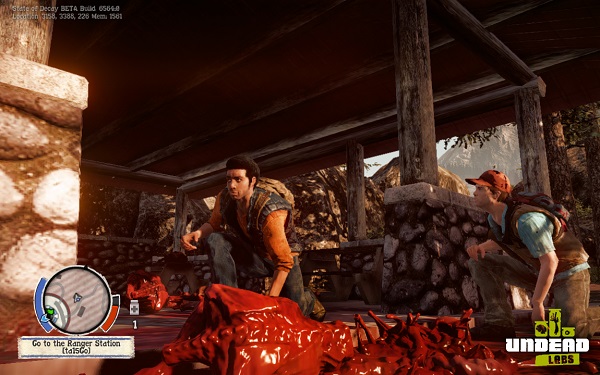
The story of State of Decay is not very compelling, but the amount of charm you’ll find in survivor dialogue is surprising. Whether it be an off-the-cuff exchange or during a mission for neighboring survivors, State of Decay has some pretty decent writing that will stick with you (especially the lines that repeat fairly often and are the same for all characters).
State of Decay has a bunch of great ideas and features, but it’s a diamond in the rough. Many of the game’s bugs and glitches suggest that the game may have been released a bit too soon. I did not run into any game breaking issues, just a lot of smaller technical problems. Frequent stuttering can be expected, and clipping issues where enemies can be seen through walls and sometimes push through them. Enemies suddenly spawn nearby, ruining stealthy endeavors. Infestations nowhere near home base will damage morale. Cars occasionally flip over without too much force. Texture pop-in is also pretty constant.
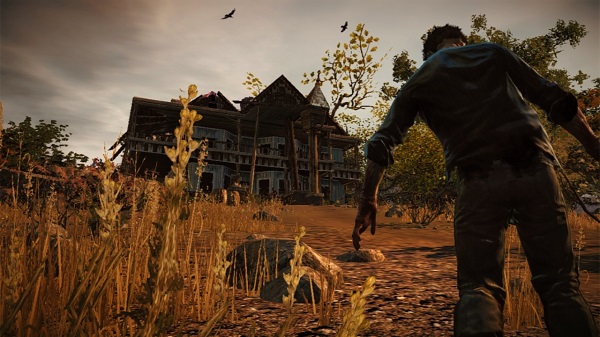
What State of Decay lacks in polish it makes up for in ambition and depth. For an XBLA release, State of Decay accomplishes a whole lot, perhaps more so than some retail games do. As much fun as the game can be, there are admittedly a bunch of issues that hurt the experience, but not enough to ruin the game for me. While I cannot give it an extremely glowing review as it is now, I will be following this game post-release and eagerly awaiting any updates to it. It may not be perfect, but it’s got all the right things in place to make its way there. It’s a shame that State of Decay didn’t release in a more polished state, but I still recommend it.
 (7.5 / 10)
(7.5 / 10)
Good
 (7.5 / 10)
(7.5 / 10)
 cjmelendez_
cjmelendez_